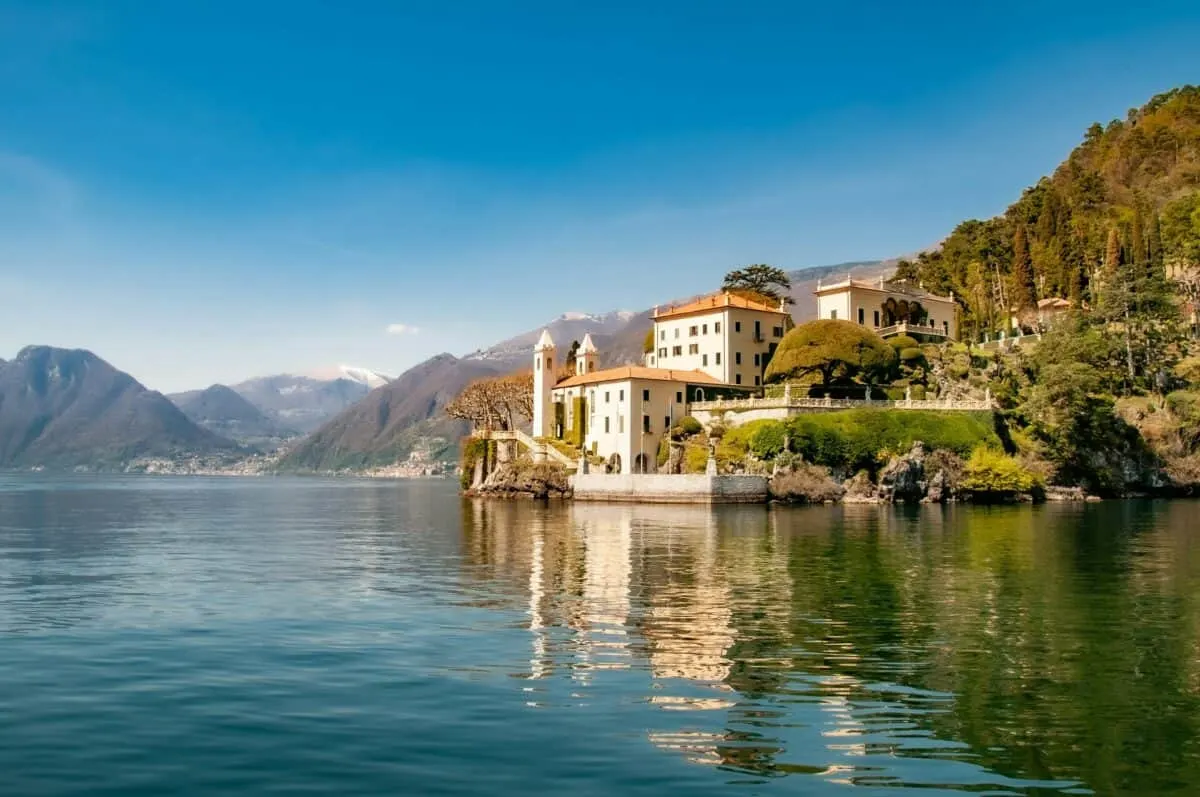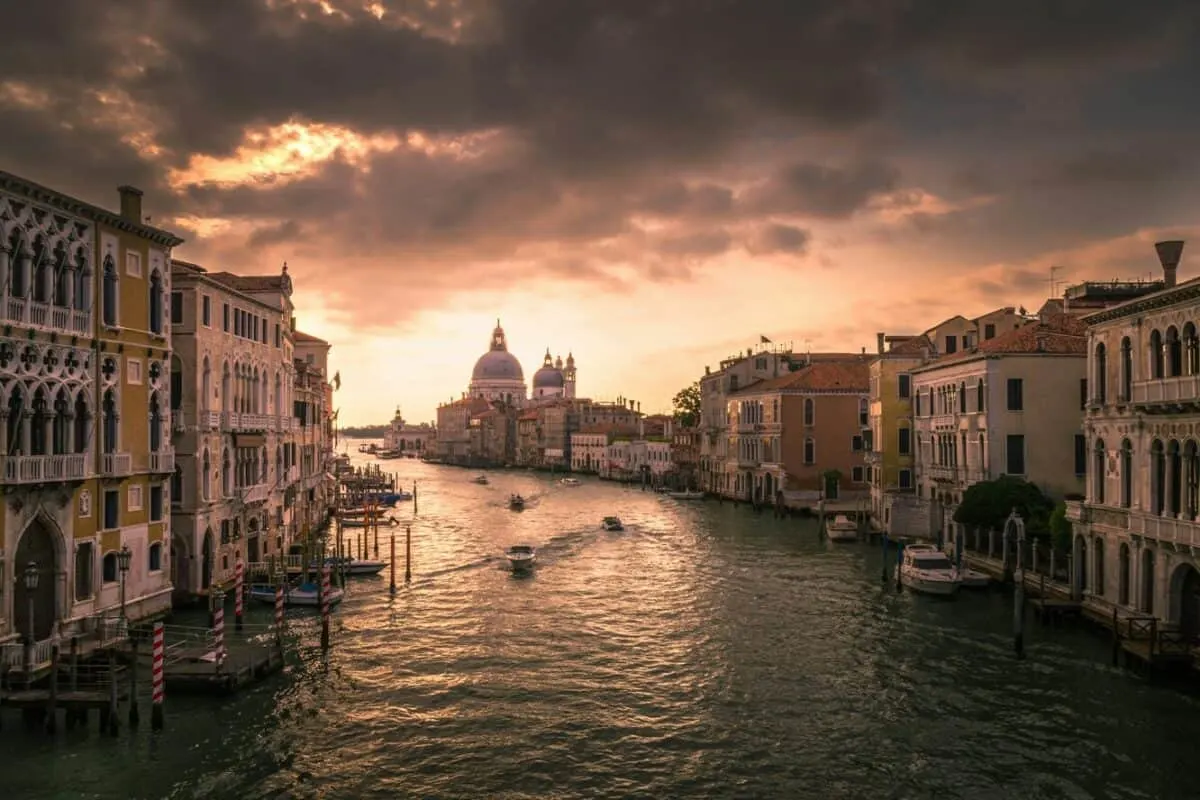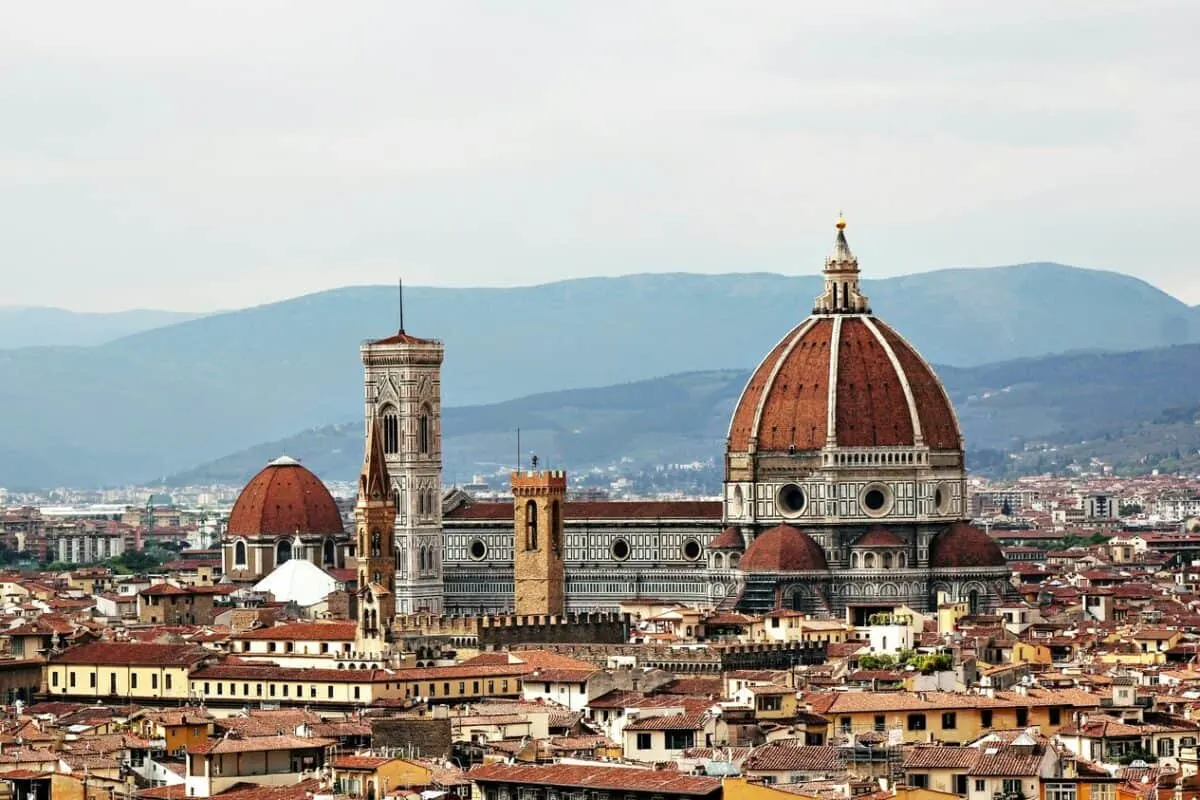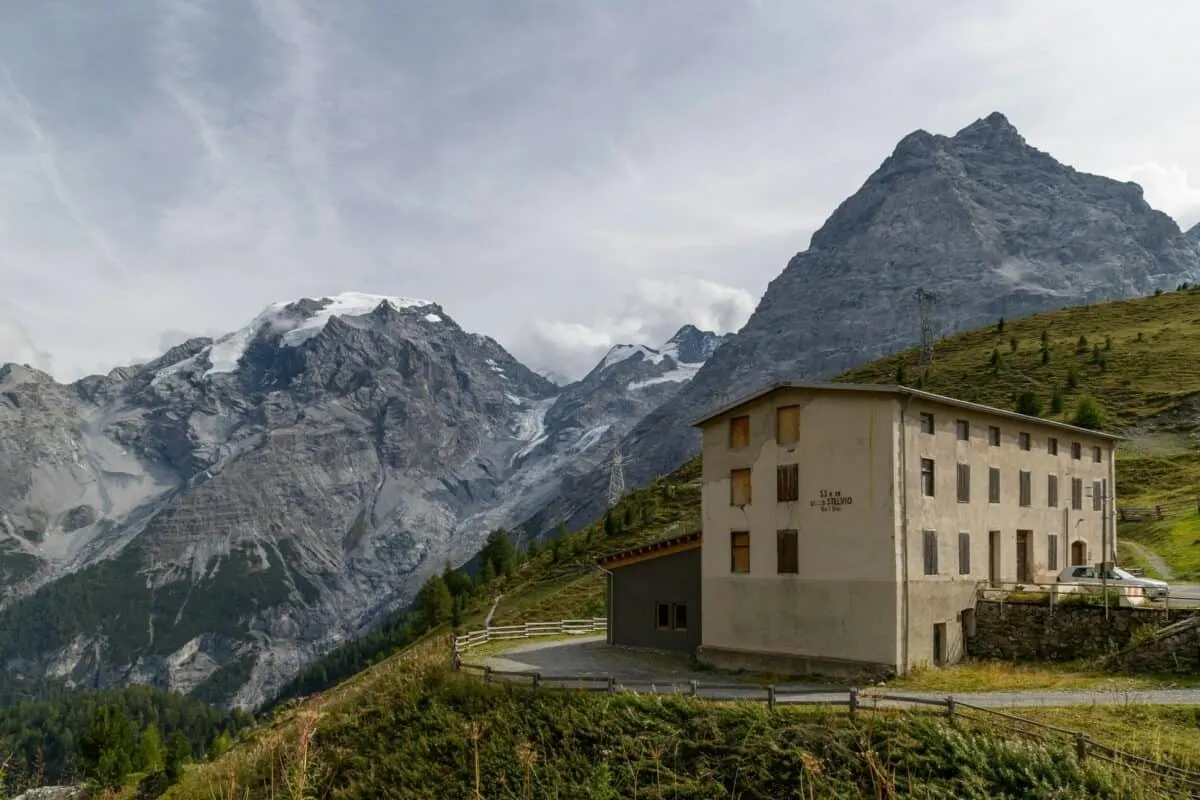
Italy captivates with historic cities, breathtaking landscapes, and extraordinary natural wonders. From the drama of the Dolomites to the ancient history of Sicily, choosing where to go to experience authentic Italy can be a tough call and one you can’t afford to get wrong.
I curated this list of the best places to visit in Italy based on two criteria: they offer something special that epitomizes the country and will undoubtedly leave you feeling in awe of this incredible place.
1. Rome – The Eternal City
It’s no surprise that Rome is at the top of the list. It has glorious architecture, early history, and enough Italian culture to satisfy even the keenest amateur historian.
Rome is home to relics of its ancient civilization, including the behemoths of the Colosseum, the Roman Forum, and the Parthenon. Add the Vatican’s Sistine Chapel, elegant squares like Piazza Navona, and the must-see Spanish Steps and Trevi Fountain, and you’ve got a ready-made Rome itinerary.
Outside of buildings and history, the Italian cuisine is delicious, the exuberance of the locals infectious, and the nightlife lively.
2. The Italian Lakes – Jewels of the North
The Italian Lakes are strung out across the top of Northern Italy, between the plains of Emilia Romagna and the Alps.
For many, the Italian Lakes embody the charm and sophistication of northern Italy and have become a favorite destination for celebrities, writers, and artists.
The best-known are Lake Como, Lake Garda, and Lake Maggiore, renowned for their serene waters, charming lakeside villages, and luxurious villas.
Beyond the famous lakes, the lesser-known hidden gems of Lake Orta and Lake Iseo have a more natural and less assuming beauty.
3. Venice – The City of Bridges

One cannot visit Italy without seeing Venice. This ethereal city is a joy to explore, with every corner revealing something special about this place built on wood and water.
Venice triumphs over the elements and uses waterways and bridges for visitors to access its beautiful Renaissance buildings and squares. Boats take regular trips across the lagoon to the islands of Murano, famous for lace making; Burano, known for glass making; and Torcello, home to the Venetian-Byzantine Cathedral of Santa Maria Assunta.
Must-sees include St Mark’s Basilica, the Doge’s Palace, Ponte di Rialto, and the Bridge of Sighs, which is named such because it connects a prison with a palace.
4. Sicily – Island of History
Sicily, the largest island in the Mediterranean Sea, is simply astonishing. Home to seven UNESCO sites, this island has plenty to occupy culture vultures and thrill-seekers alike.
Sicily has some of the most spectacular historical ruins in the world. The Valley of the Temples, Segesta, Syracuse, and Selinunte are just some of its archaeological wonders. Prepare to be awed as you walk amongst the columns and stones of ancient Greece.
One of the best things to do in Sicily is hike to the crater of Mount Etna and look into the glowing maw as she spits out fire and smoke, threatening to erupt at any moment. The hike is challenging, but the other-worldly environment at the top is a once-in-a-lifetime moment.
5. Montepulciano – The Florence of the South
Perched on a hill with magnificent views of the sun-drenched Tuscan countryside, Montepulciano is known for its classical Renaissance architecture and Vino Nobile di Montepulciano wine.
The medieval hill town is a jumble of cobbled streets and piazzas that beg you to sit with a coffee. There are plenty of places to try the eponymous wine and sample local food like pici, a thick hand-rolled spaghetti, and hearty wild boar.
Montepulciano sits at the eastern end of the famed Val d’Orcia, one of Italy’s best driving roads. If you drive the SP146, the route will take you past traditional villages, vineyards, and olive groves. The roads are lined with hundreds of iconic cypress trees, and you might even find the infamous Gladiator house!
6. Dolomites – The Pale Mountains
Once an inland sea, the breathtaking Dolomites top the list of my favorite places in Europe.
Scattered over a region in the far north of Italy, the Dolomiti rises abruptly from the surrounding landscape. They comprise striking vertical forms like towers, spires, and pinnacles connected by large rocky platforms and ledges.
A skier’s paradise in winter and a hiker’s dream in summer, the mountains are easily accessible by an extensive cable car network that deposits you at the top of the ski run or hiking trail. Dotted with refugios serving typical mountain food, it would be easy to lose yourself in the mountains for weeks!
There are also cycle paths along impossibly perfect river valleys, along with thermal spas, turquoise lakes, local eateries, and wine. In this outdoor playground, drivers can discover over 20 thrilling mountain passes.
7. Florence – The Cradle of the Renaissance

Another big-hitting Italian city, Florence is the beating heart of Tuscany and so perfectly beautiful that it will take your breath away.
There are so many must-dos in Florence that it’s impossible to list them all. You’ll want to climb Brunelleschi’s Dome, which tops Florence Cathedral, cross the Ponte Vecchio, gaze at Michelangelo’s David in the Galleria dell’Accademia, and admire Botticelli’s The Birth of Venus in the Uffizi.
The historic center of Florence is also perfect for wandering, with lesser-visited squares and streets that reveal hidden gems. Spend time walking around and find bronze statuaries, Renaissance architecture, beautiful churches, Insta-worthy eateries, and two more Davids!
8. Puglia – Tuscany of the South
Right at the bottom of Italy, in the heel of the boot, is Puglia, or Apulia as it’s known in Italian. Way less populated than Tuscany, Puglia has many things in common with the fabled region, including a beautiful coastline, historic towns, and a landscape studded with thousands of olive trees.
The old towns of Ostuni and Gallipoli add a cosmopolitan air, with their narrow cobbled streets lined with cute cafés and independent boutiques. Polignano a Mare and Santa Maria di Leuca provide the coastal element with fabulous beaches and pretty towns.
For a more authentic slice of Puglia, head for the gritty port city of Bari, which has a maze-like old town and an Italian street food scene. Off-the-beaten-path Gargano Peninsula is a lush and diverse landscape lapped on three sides by the Adriatic Sea.
9. Emilia-Romagna – The Food Valley
Stretching from the Apennine Mountains to the Po River, Emilia-Romagna is home to producers of some of the world’s most famous and delicious food items. Oh, and Ferrari is based there, too!
Parmigiano Reggiano, prosciutto di Parma, alsamic vinegar of Modena, Mortadella bologna and Culatello salami are all unique to this region with many of them holding DOC (Denominazione di Origine Controllata) status.
You can take a food tour in the medieval city of Bologna, which is well worth a visit for its UNESCO architecture, or head out into the wider region and visit farms, factories, and artisan producers who will share their best food with love and pride.
10. Amalfi Coast – The Divine Coast
The 31-mile (50 km) stretch of tarmac, the Amalfi Coast road, winds from Solerno to Sorrento. Passing colorful stacked villages, acres of vineyards, and fragrant lemon groves as it picks its way between the mountains and sea, this is not a road for the faint-hearted.
While visiting the villages of Portofino, Amalfi, and Ravello is non-negotiable, driving the engaging and gravity-defying SS163 is what people come here for.
The views from the road are impressive, with Capri beckoning in the distance. For even better views, head into the hills to Ravello and the Villa Rufolo gardens, where trees pose against the Gulf of Salerno for that quintessential Amalfi image.
11. Assisi – Birthplace of a Saint
Overlooking Umbria’s rolling valleys and woods from Monte Subasio, Assisi is a small yet powerfully magnetic destination whose basilica dominates the skyline for miles.
Birthplace and final resting place of St Francis of Assisi, the UNESCO town oozes history and charm. Preserved in a sympathetic rather than a Disneyesque manner, Assisi is a treasure trove of medieval architecture and history.
Mellow, honey-colored stone buildings line the pilgrim’s (and tourist’s) route along cobbled streets and through pretty squares, all the way to the magnificent Basilica of St Francis of Assisi. The remains of St Francis lie in the crypt, and remarkable frescoes by Cimabue and Giotto cover the walls of the Upper Church.
12. The Stelvio Pass – The Highest Pass in Italy

This one is for the petrolheads out there! High in the Italian Alps, north of the Italian Lakes, the Stelvio Pass is widely acknowledged as the best mountain road in Italy.
People travel from around the world to complete the pass — in a car, on a motorbike, and some even cycle it! The road is 29 miles (47 km) of twisting tarmac through the majestic South Tyrol, right on the border with Switzerland.
With 60 hairpin bends, five tunnels, and topping out at 9,045 feet (2,757 meters) above sea level, the Stelvio is a celebration of engineering and man’s ability to conquer the landscape.
13. Matera – The Second Bethlehem
A unique city in Basilicata, the fascinating Sassi di Matera cave dwellings have put this once poverty-ridden town on the map.
The caves were inhabited for centuries until the 1950s, when the occupants were forcibly removed and the caves abandoned. In the 1990s, the troglodyte caves were brought back to life as a UNESCO World Heritage Site.
Matera is fast becoming a top southern Italy tourist attraction, rivaling the Trulli houses of Alberobello. Caves are becoming cool AirBNBs and restaurants. It’s certainly an unusual place to spend a night!
14. Cinque Terre – The Italian Riviera
Have I left the best ’til last? I may have if you love hiking, water sports, outdoor activities, picture-perfect town, and traditional harbors!
The Cinque Terre is a group of five gorgeous, centuries-old villages perched high on the rugged Ligurian coastline. The Sentiero Azzurro, a cliffside hiking route, links Monterosso, Vernazza, Corniglia, Riomaggiore, and Manarola.
Brightly painted houses stagger down the cliff sides to harbors filled with traditional fishing boats bobbing lazily on turquoise waters. In fact, the best way to see the villages is from the water, where you can fully appreciate the pretty villages and escape the sometimes overwhelming crowds.
Back on land, family-run trattorias serve homemade pasta (what else?) with basil, parmesan, and pine nut pesto, the region’s traditional sauce.
That’s a Wrap!
My top 14 best places to visit in Italy will show you the country’s soul, from the art history of the Renaissance and ancient ruins of Rome and Greece to the spectacular landscapes across the country.
Maybe you’re planning an Italian road trip or want to find a base and take day trips. However you travel around Italy, you will leave wishing you could stay longer and see more!
This article originally appeared on Travel Binger.

Izzy is a travel blogger and vlogger at The Gap Decaders, which she founded in 2019 after quitting her job and selling everything she owned to travel in an overland truck with her hubby. Izzy writes about destinations in and around Europe, road trips and van life.


